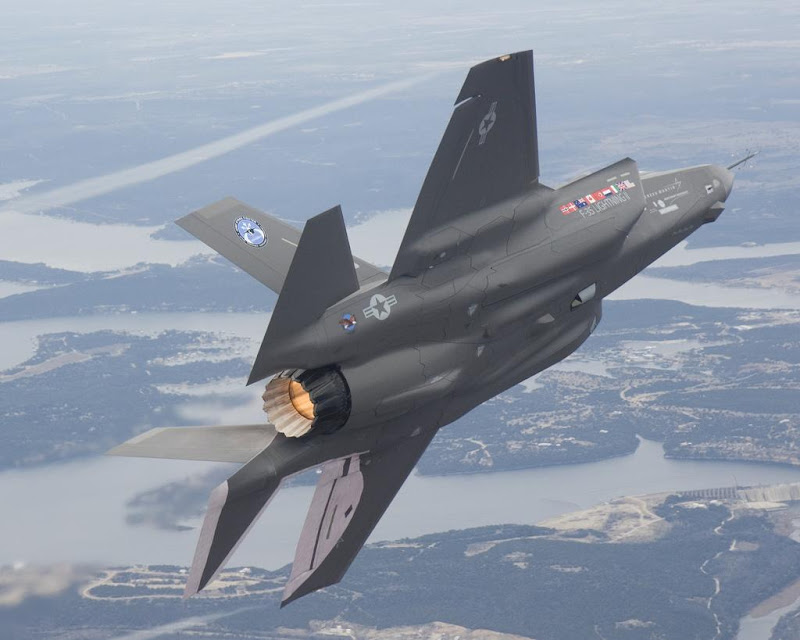

The Joint Strike Fighter (JSF) will be the mass production of 5th generation aircraft of the 21st century. At October 26, 2001 there was an ongoing competition between Lockheed Martin (designer of aircraft to the left, the X-35) and Boeing (designer of aircraft to the right, the X-32). The winner of this contest will result in the replacement of the F-16. Unlike the F-22 JSF aircraft will be a relatively low cost. U.S. Air Force, U.S. Navy and the Royal Navy and U.S. Marine Corps will use the JSF.
In general, the fuselage will be the same, with some exceptions, the U.S. version Air Force conventional takeoff will be a multi-role fighter. The version of the U.S. Navy the JSF will be similar to Air Force version except with a stronger internal structure, landing gear and the hook of detention to allow carrier landings. U.S. Marines and Royal Navy version (X-35B) will be capable of short takeoff and vertical landing (STOVL), allowing this version of the JSF to land almost anywhere. The JSF will use many of the advanced technologies used in the F-22 fighter still remains a low cost 5th generation. Is scheduled to enter service around 2012.
On July 7, 2006, with a nod to the history of the Air Force chief of staff of U.S. dubbed the F-35 Joint Strike Fighter "Lightning II". General T. Michael Moseley announced the decision Friday at Lockheed Martin facilities in Fort Worth, Texas, where he makes the stealthy multi-role fighter. The decision was based on information received from pilots and other services and coalition partners participating in the JSF program. The Lightning P-38, JSF's namesake, was designed in late 1930 and was used during the Second World War. The name also refers to a British supersonic aircraft called the BAC Lightning, built in the 1950s by English Electric. English Electric eventually became BAE Systems, an industry partner in the program. Moseley considered five names: Mamba, Cyclone, Piasa, Reaper and Spitfire II. The ceremony also marked the public launch of the F-35A conventional takeoff and landing variants.
The plane left the production line in February and has participated in ground tests since. The first flight of the conventional takeoff and landing (CTOL) F-35 aircraft of the variant is carried out on December 15, 2006, at Lockheed Martin in Fort Worth, Texas. The flight lasted 35 minutes, 25 minutes below the expected 1 hours, because data from two air sensors not working properly. Although not a direct threat, the procedure called for ending the flight at that time, preventing completion of the remaining evidence (including raising the landing gear).










